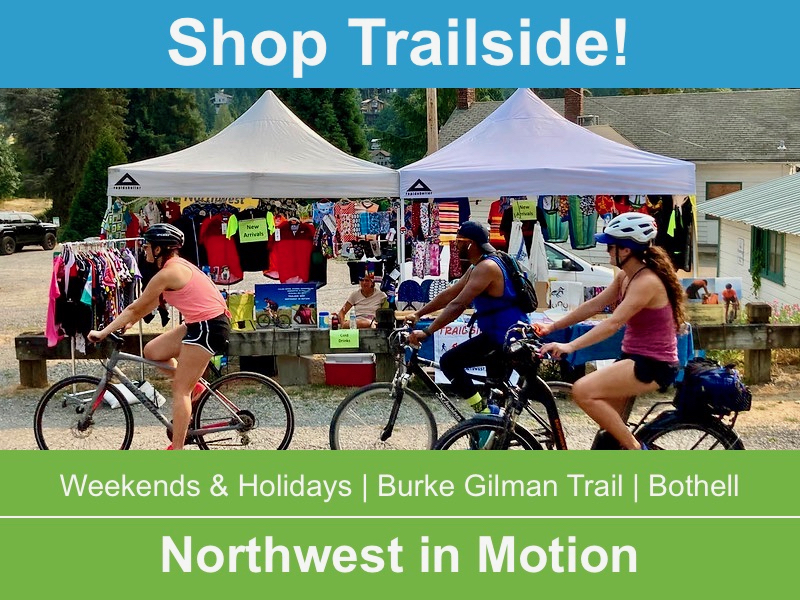Cory Ostertag was the third finisher of XWA 2023, completing the Cross Washington Bikepacking course in a tidy 03d:16h:17m. Cory’s story is a bit unique in that he lives in Squamish, BC, and he incorporated a low-carbon footprint, multi-modal transportation mix to get to and from the race course.

Hometown
Squamish, British Columbia
Work/education
I’m the Customer Experience Manager for 7mesh, a Squamish-based cycling apparel company.
Bikepacking Resume
–2021 BC Epic 1000 km, 2nd (during the June 2021 Heatdome, 45°c every day)
–2022 Buckshot 420 km, 1st
–2022 BC Epic 1000 km, 1st
–2022 Log Driver’s Waltz 800km, 1st and FKT
–2023 Cross-Washington 1165 km, 3rd
What are your competitive bikepacking motivations?
There’s a lot of pleasure to be had from biking all day, everyday. But there’s a lot of suffering too. There isn’t a single motivator but a bunch of factors that propel me. A big internal motivator is just testing to see what I’m physically and mentally capable of. I like to see what type of frame of mind I can enter, and then remain in, for a prolonged period of time.
The other big motivator for me is inspiring others. I get a lot of satisfaction from sharing my stories and hearing that it inspires other people to attempt something similar. Within that, my son is a massive motivator. I want to show him that we are capable of anything, and that any goal or adventure, regardless of how crazy and niche it might be, is worthy of our dreams.
What was your plan for XWA, and how did it match up with reality?
As with any race, I spent a lot of time visualizing how I hope it will go, but rarely do things go exactly as planned. That was definitely the case with XWA!
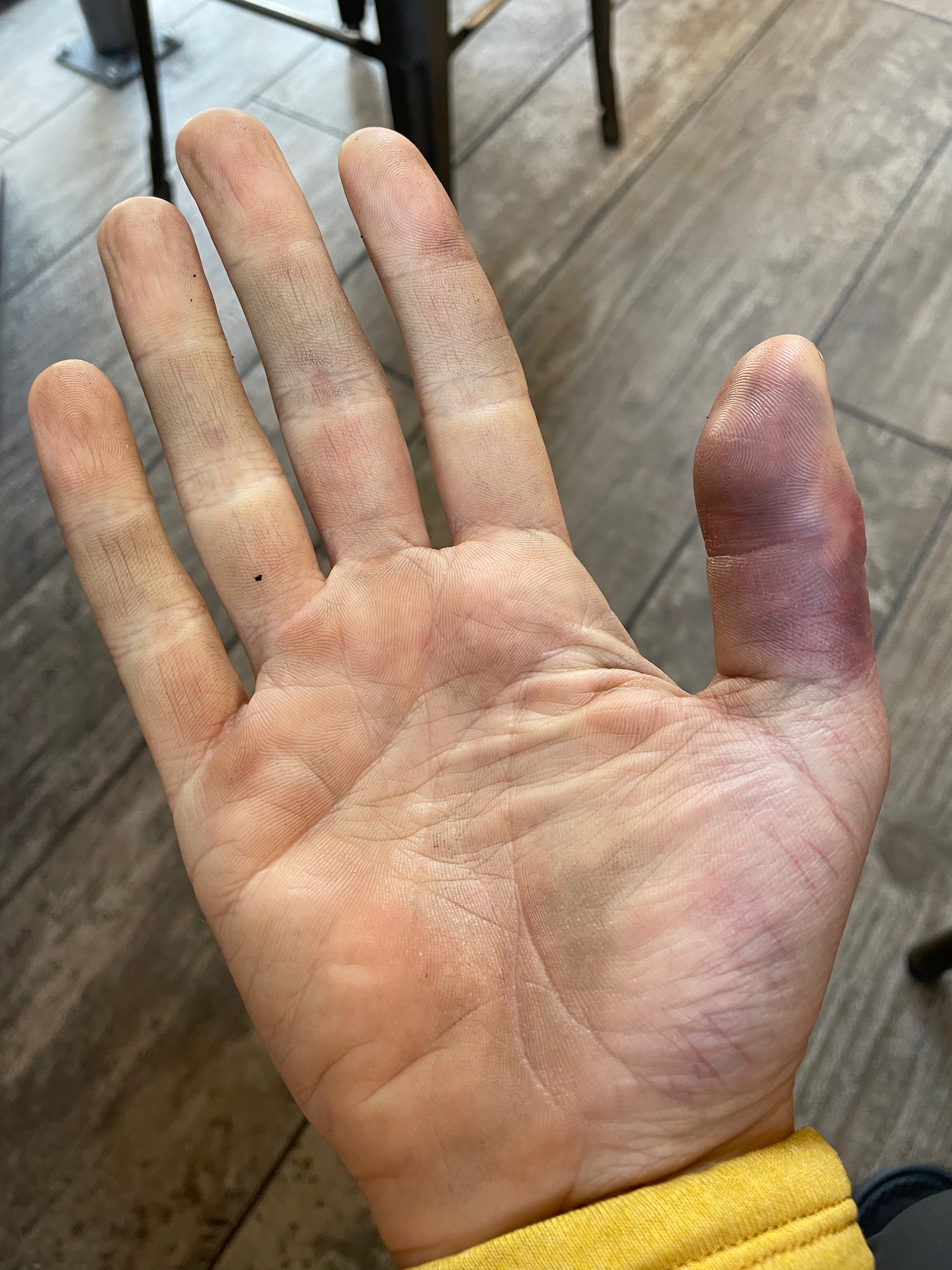
I went in with lofty goals of winning and potentially setting a new course record, but then I ran into a bunch of setbacks, first of which was crashing with Andy Leveto (eventual 2nd place finisher) within the first 15km. We were chatting away, getting to know each other when we tangled handlebars and both hit the pavement at speed. I scraped up my knee and elbow pretty badly and also compressed my thumb in a strange way. I basically spent the following 700 miles nursing these injuries and directing a lot of mental energy towards them. Probably the most concerning was my thumb which swelled up to twice its normal size and turned completely purple. I almost scratched in Wenatchee because I irrationally convinced myself that losing my thumb completely was a possibility. Ultimately, I took more rest than I normally would during a bikepacking race because I felt that I needed to give my body more recovery than normal in order to keep from exacerbating my injuries.
Talk about the community component of XWA
Definitely the lasting impression of this event is credited to the strong community that surrounds it. While riders are required to be self-supported during the ride, there is a massive amount of online support and encouragement before the race and after, thanks to a following of dot watchers and prior-year participants. I didn’t pay a whole lot of attention to this before the event, but once I landed in La Push, and started to understand the difficulty in getting to the remote start line (and same with the finish line), I started to understand how integral this community is to make the event happen. There’s a wealth of knowledge being shared on the XWA facebook group, and this makes the event more approachable and feasible as the community pools its resources (i.e. sharing rides, resupply tips, accommodations and warnings of dangers on route).
It was energizing to meet everyone at the pre-event meeting the night before the start and then totally amazing to see the amount of encouragement being offered through positive messages online to every finisher, whether completing in record time, or 10 days.

Also, a massive amount of credit and praise needs to be sent to John Heaton of Tekoa, WA. He puts so much effort into welcoming all the riders at the finish. Sometimes finishing these events can be anti-climatic, but John’s warm welcome and hospitality really made this ride memorable for me.

You used multiple modes of transportation to get to and from the race course. How did that go?
These events are logistically complex affairs, and it’s unfortunate that we often need to rely on cars to get there. One of the reasons why I selected XWA versus another bikepacking event was because I was able to transport myself to the start and back home from the finish predominantly using mass transit. Coming from the Vancouver area, I was able to piece together my travel using Vancouver’s public transit, then a series of ferries, regional buses, and a little bit of riding to get to La Push. Coming home, I took the Amtrak Empire Builder train from Spokane to Seattle then transferred onto a bus to get back to Vancouver. This made the whole trip a real adventure and everything was amazingly smooth and easy to navigate.
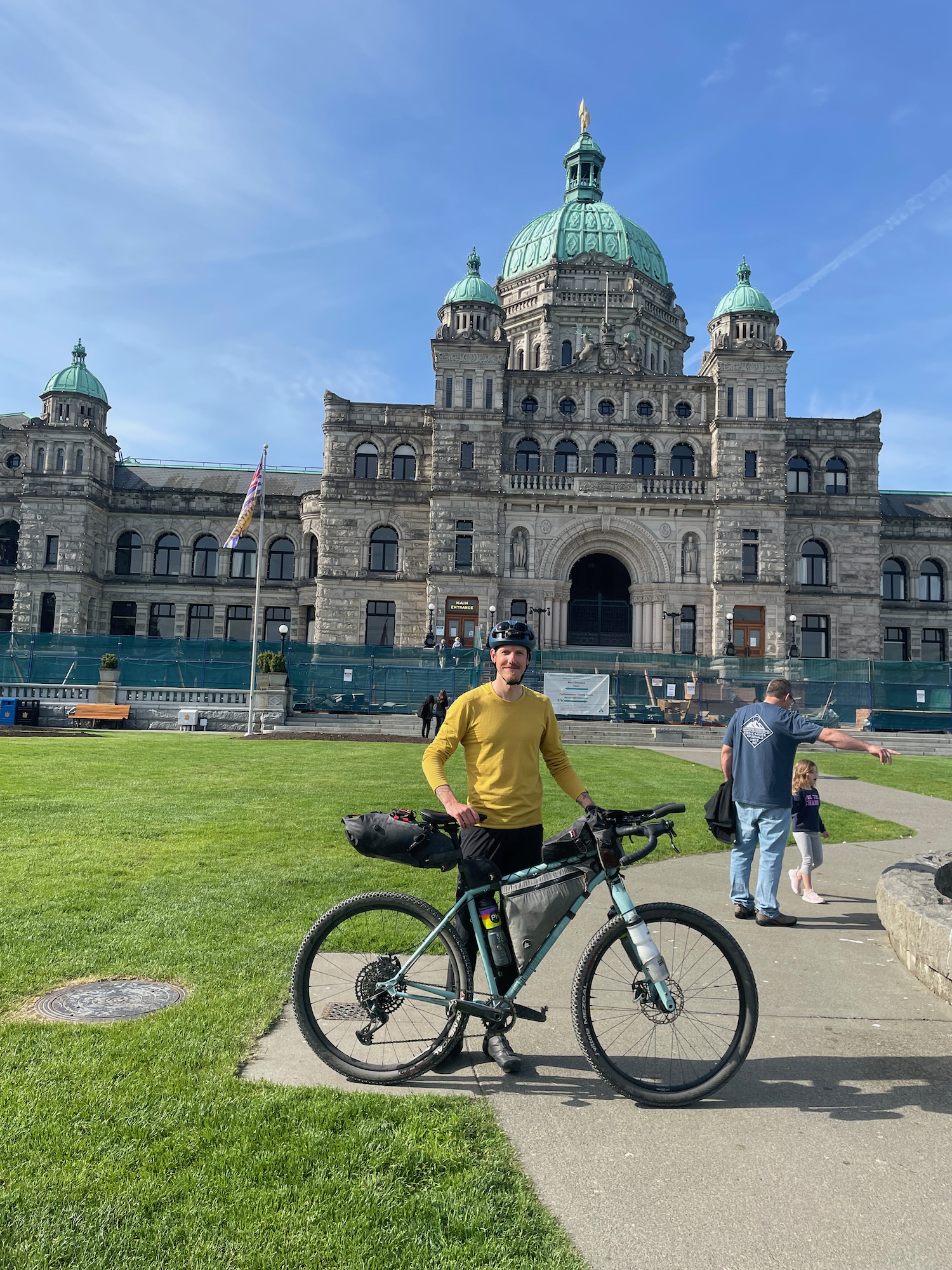
I’m stoked to have been able to do this ride with a very minimal greenhouse gas impact, but I’m also pleased that I was able to guinea pig this idea and hopefully demonstrate to others how easy it is to do this route car-free. I think that this makes the route much more accessible for a larger group of people. This should be on the bucket list of any bikepackers living in the Vancouver or Victoria areas.
XWA Gear
Bike setup and everything I packed for #crosswashington:
@panoramacycles Taiga EXP size large. SRAM Eagle GX mullet setup with #gevenalle shifters and TRP brakes. Hunt Wheels w/ Vittoria Mezcals, #son dynamo powering @klite_dynamo_power front lamp, rear cube light and charging system. @ergonbike gravel bar tape, SMC Core saddle, and GXR grips (on aerobars), Garmin 1030.
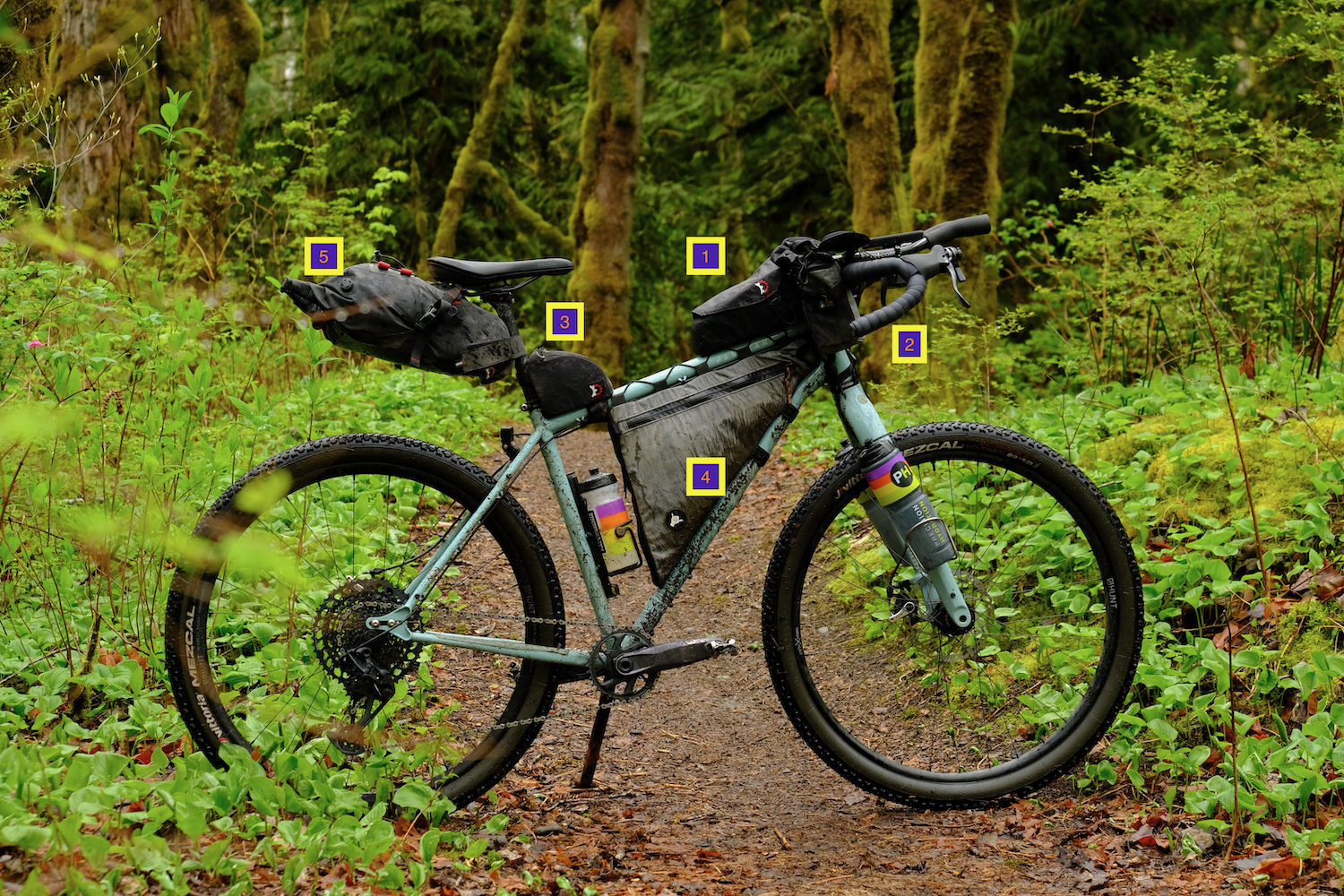
1 – @revelatedesigns Mag Tank 2000
Bars – mix of honey stinger waffles, kates, bobos, hornby, etc,
Chamois cream (never used!)
Penaten cream
@precisionfandh hydration tablets
2 – Feedbags
@precisionfandh pf90 gels
Dried mango, potato chips, alternating junk food
Inhaler
Ski lock
3 – @revelatedesigns Jerry Can
Repair kit; rag, spare valves, tire boots, sealant, multitool, wolftooth lube, brake pads, wolftooth chain pliers, spare links, dynaplug racer, spare plugs, tire levers, patch kit, super glue, curved needle and thread
4 – Custom @shakapacks Frame bag
Thermarest Neoair Xlite
Katadyn BeFree filter
@7meshinc Oro Jacket
Single-serve carb drink mix
@fromhighabove hot pocket with cables, charger, cache battery, spare batteries for fenix headlamp
First aid kit/toiletries
Whatever extra food I picked up en route
5 – @revelatedesigns Spinelock
2 tubes
OR Helium bivy
Big Agnes Pluton UL 40
Mountain Hardwear Ghost Whisperer
Gloves
Merino neck chute
@7meshinc seymour tights
@7meshinc socks
@7meshinc Gryphon thermal
@7meshinc spare bibshorts
@7meshinc synergy jersey
@7meshinc glidepath pants
What gear worked for XWA, what didn’t?
This was my first time riding with a dynamo hub and I was really happy with how amazing the dynamo powered lighting was. It was such a relief to not have to worry about charging lights and it saves a lot of weight not carrying battery powered lights.
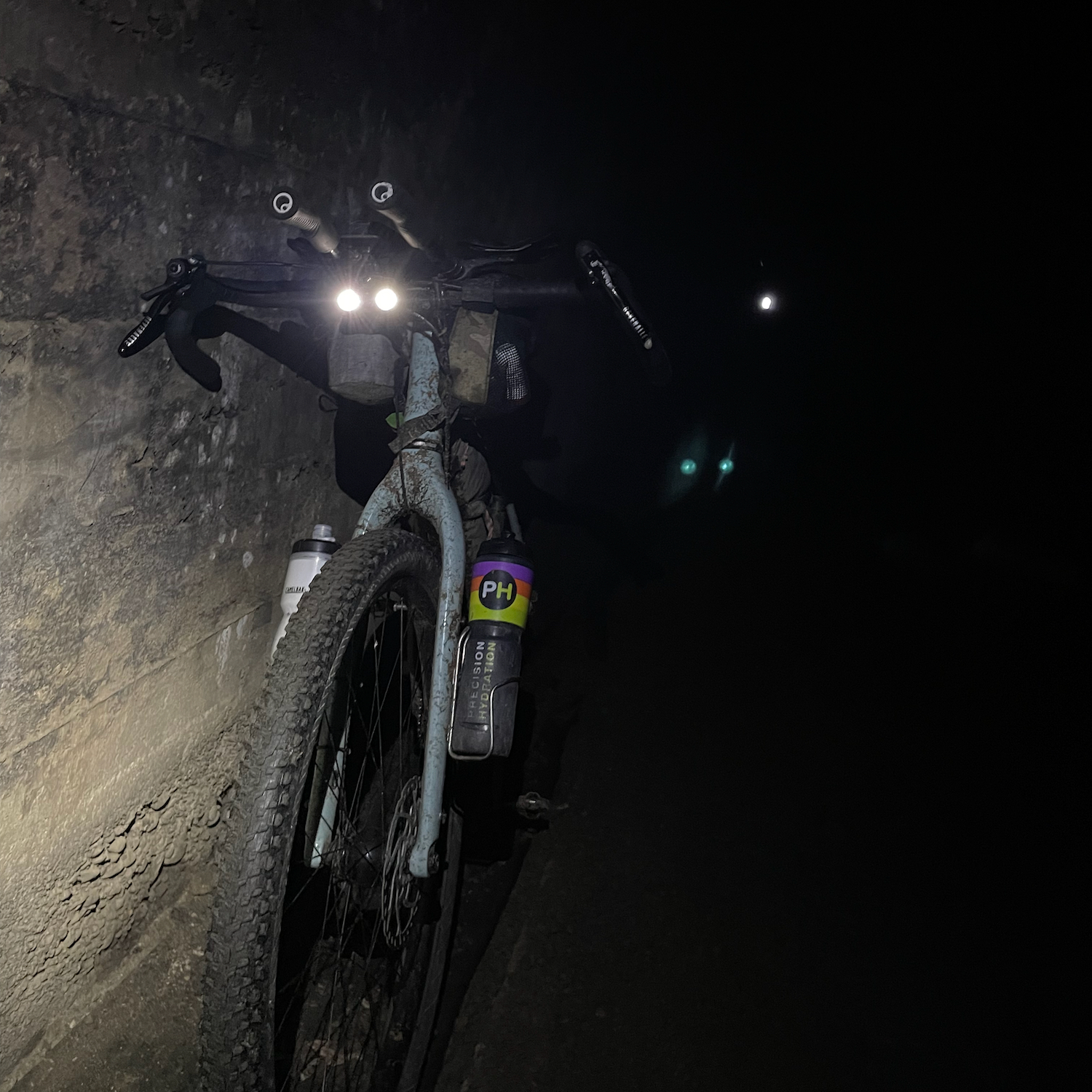
I was always really happy with my sleep system. This was the first time I’ve ever carried a sleeping bag in a bikepacking race and combined with my sleeping mat and bivvy, I felt like I had a really comfortable and reliable set up. I wasn’t cold and I think I grabbed some quality sleep, albeit short.
I can’t say much “didn’t work”, although I’m always tweaking my setup and trying to make everything run a little more efficiently. I did find that I was having to remove and open up my saddle bag far more frequently than I would have liked. This was an inconvenience and waste of time as I had to dismount from the bike in order to make wardrobe changes. I’m considering how I can fix this for future races. I’ve never used any sort of front bag/roll but I might consider something mounted on my handlebars so that I can access clothing faster.
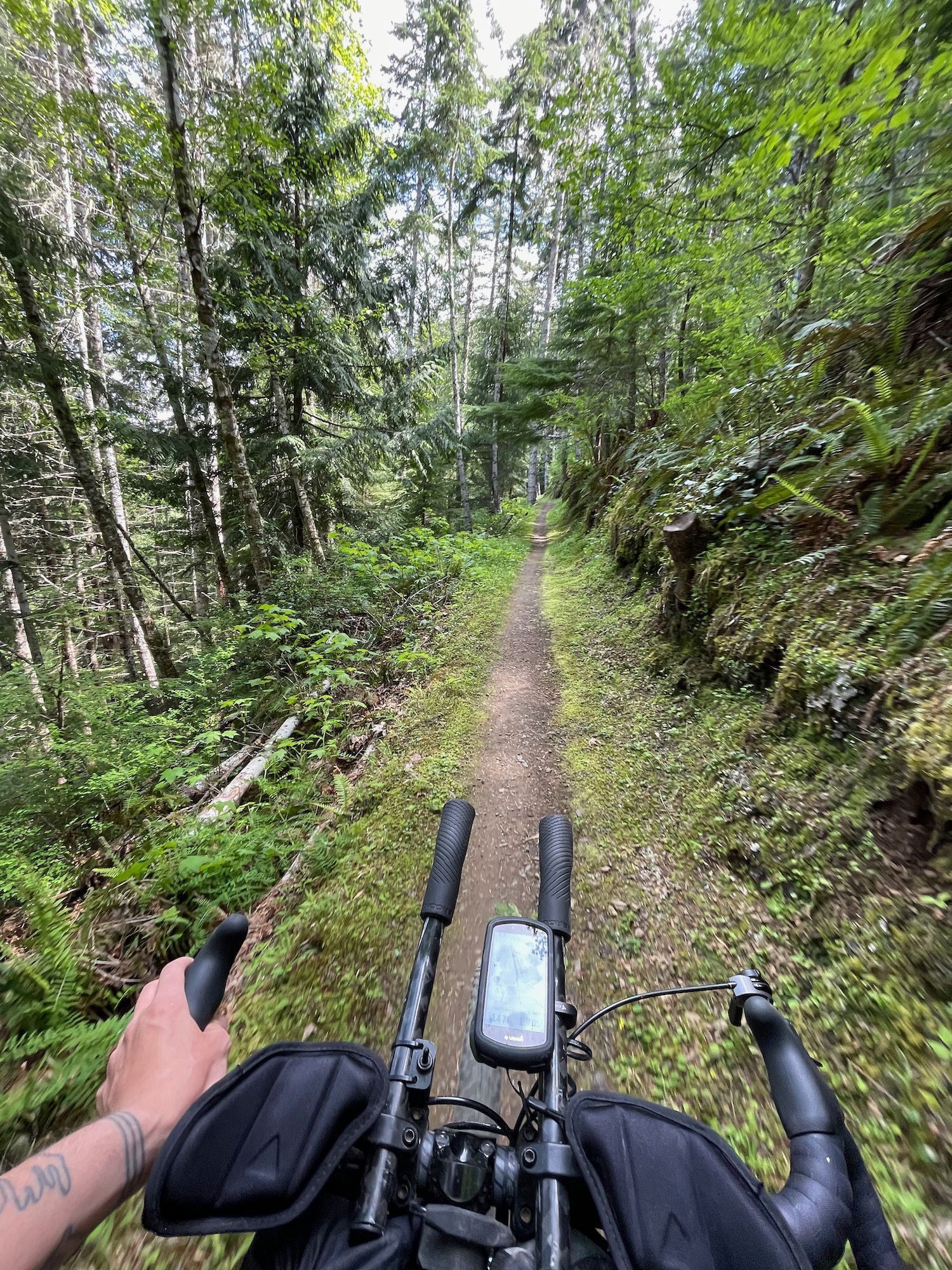
How did you train for XWA?
When I reviewed the profile of the XWA route, the amount of climbing in the first half really stood out to me. I knew that I would need to be prepared to handle a really physically exhausting first day, then still be able to wake up and keep pushing on subsequent days. In order to prepare for this I did a lot of training blocks with really hard tempo/sweetspot workouts followed up by multiple endurance days. I basically trained my body to absorb the highest amount of stress on day one, then still be able to put up with multiple days of riding afterwards. I was really consistent with back to back training days. I did a big block of training in Tucson in February then another big block, including a bikepacking trip in late April.
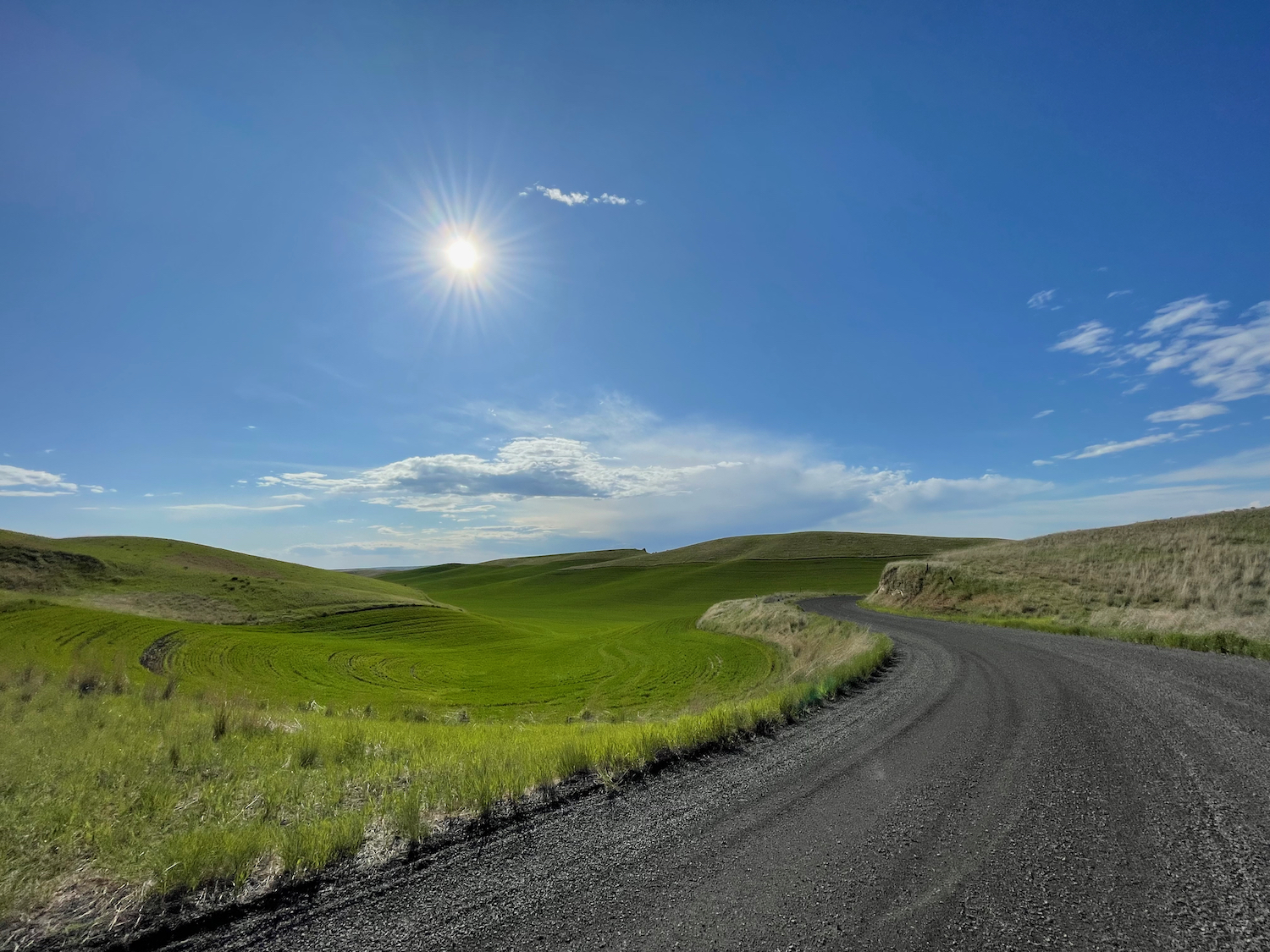
How did you handle nutrition and hydration?
Nutrition was a major struggle for me. I put a lot of effort into planning my resupplies ahead of time, but having some special dietary needs (gluten free and vegetarian), I underestimated how difficult it would be to find food I can eat. We often rely on gas station food during these events, but I also like to have one or two “real” meals a day and I was hoping to get some gluten free Subway sandwiches as this chain seems to be really prevalent. Unfortunately none of the Subways I went to had gluten free bread therefore I had to rely on junk food available at gas stations and 7/11.
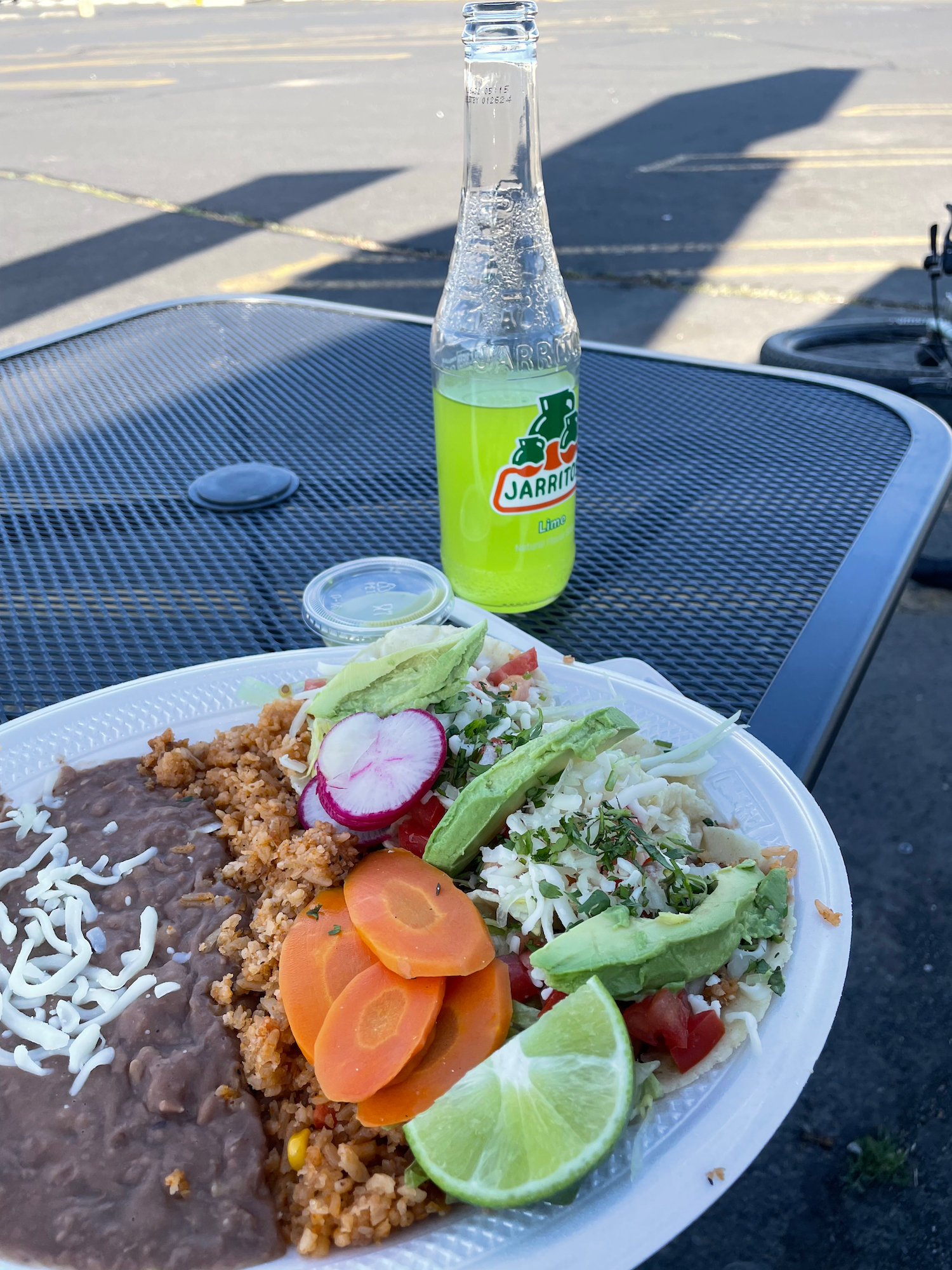
When I got to Wenatchee I was able to do a big resupply at Fred Meyer and felt fairly well set up after that. I also got tacos from the Mexican food truck in Ephrata which satisfied my craving for a hot meal.
Being celiac is always challenging, but apparently much more so in rural USA. It’s a big concern of mine now and I’m having to reconsider my diet as I look forward to doing more international events.
Hydration was quite easy. I carried a water filter and never used it. I was able to fill my bottles using water fountains at soda machines at all the gas stations across the route. I purchased zero bottled water which I’m happy about.

How did you handle sleep?
I never enter races with a specific sleep strategy in mind, but I typically listen to my body and mind and determine how much rest I need based on how I’m feeling. With XWA being a little longer than races I’ve done before, and with longer events on the horizon, I was intending on sleeping some amount every night. I wanted to experiment with more sleep to see how that would impact my overall alertness and physical performance during the day.
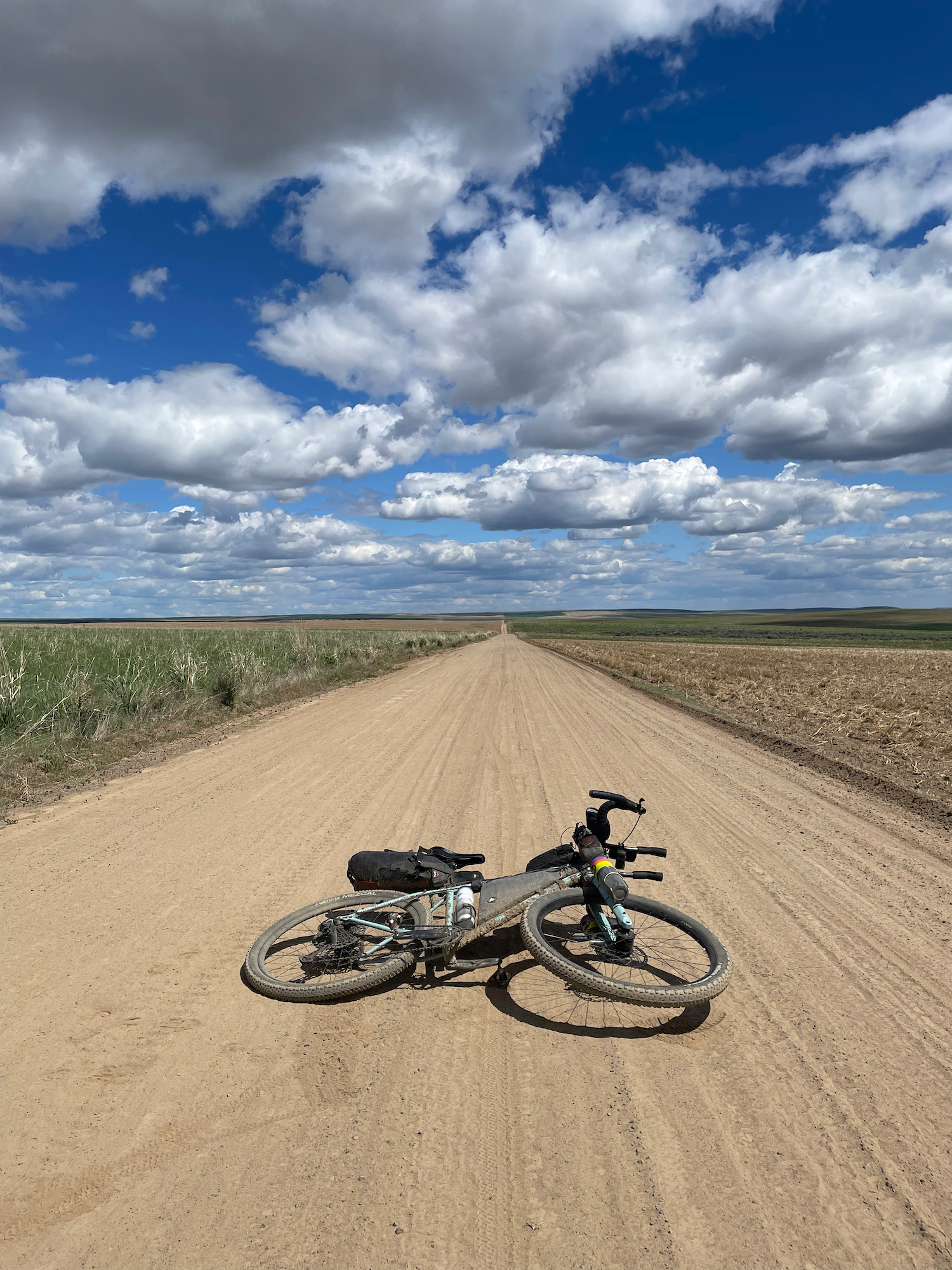
On night one I only ended up getting 1 hour of sleep because the two other leaders and myself all made it to Kingston for the first ferry, and 1 hour was all I had time for before the 4:45am ferry. On night two I was approaching the Colockum climb and decided I wanted to sleep low then wake up early and climb during the night to reach the top for sunrise. Similarly, on night three I called it around 11pm then started riding again around 3am.
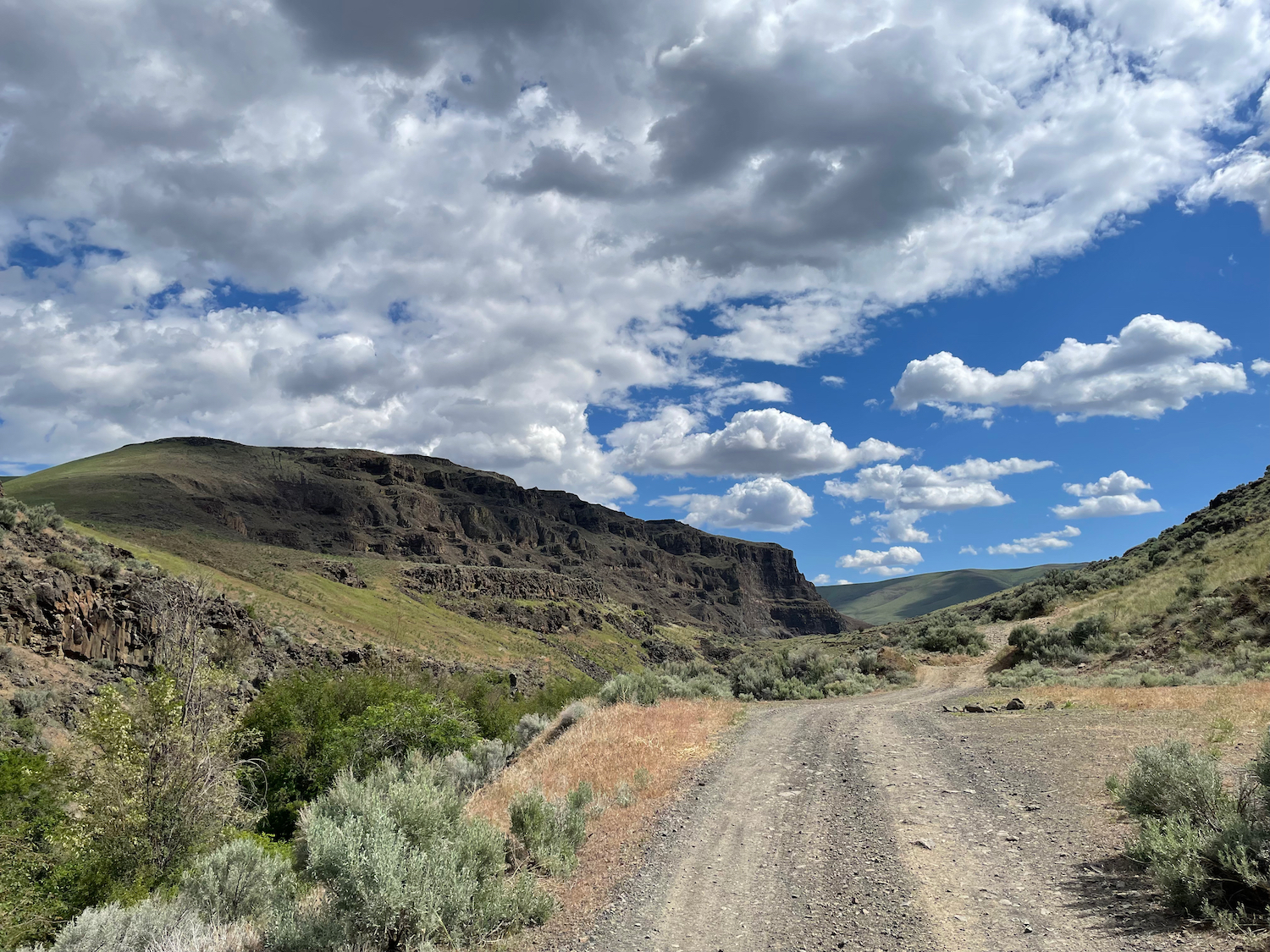
Overall I’m happy with how my sleep went but I think had I not had multiple injuries, I probably would have slept a little less.
Any lessons learned during XWA 2023?
Well as I mentioned, I learned a hard lesson about food. Although the USA is not that foreign compared to Canada, there are some distinct differences in food selections and brands that are typically readily available at gas stations and convenience stores. I went in with a nutrition strategy and that was thrown out the window pretty quickly. In the future I’ll need to do some more planning and sleuthing around to find out what types of food are available resupply points and I might consider “cheating” on my vegetarian and celiac diet in order to get the macros I need.
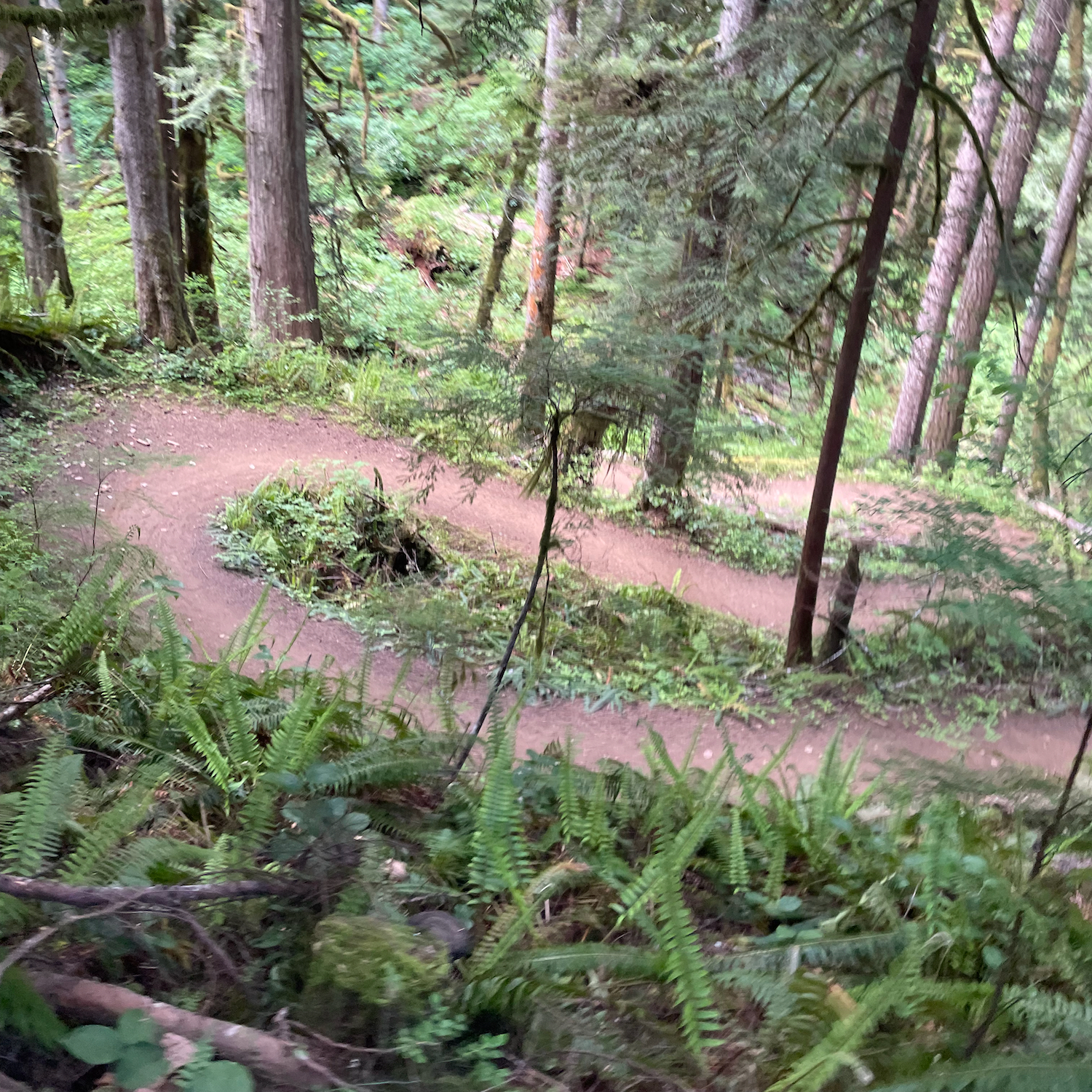
What are your previous athletic experiences?
Prior to this ultra/bikepacking thing, I raced road bikes for quite a few years. I wasn’t especially good but managed to hold my own in Cat 2 and had some great experiences traveling with a local trade team to stage races throughout the Pacific Northwest. I learned alot about training, recovery, nutrition and race strategy but I also discovered that I prefer the process of training and doing long rides more than I enjoyed the racing itself. Once Covid hit, and races were being canceled, I started to look for more individual adventures and that’s how I switched to bikepack racing.

What’s next on your to do list?
Well my next big milestone is not at all bike related. My wife and I are welcoming our 2nd child near the end of June and I’m going to be taking a big break from cycling in order to support our family. Our summer will be low key and I couldn’t be happier about that.
In October I’m planning on participating in the Arkansas High Country Race, a 1000 mile bikepacking loop. This has been a big goal of mine for a long time now. We’ll see how much training I can bank with a toddler and a newborn at home!
